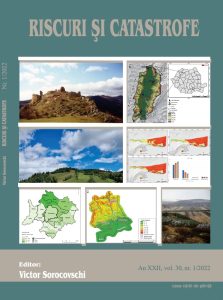Riscuri Si Catastrofe – Risks and Catastrophes Journal –
Volume 34, Number 1&2, 2024
Finta István
Development Traps and Development Policy Interventions.
pp: 107 – 118 || Full text
Nowadays, development has become a natural part of our lives, the dynamics and types of which are the only things we tend to highlight and compare. This is why it may seem unusual that science has identified an anomaly in certain territorial units where there is a lack of development. This situation has been called the development trap. The development of an area is, of course, dependent on a great many factors, so that the range of development traps seems almost inexhaustible. This paper takes stock of the development traps identified so far, not with the aim of questioning the methods used, but to evaluate the data and indicators used to identify them. The study concludes that macro-level data are not causes but consequences, masking the true root causes of problems, but they play an important role in establishing a diagnosis at the regional level. The study aims to provide a convincing illustration, using concrete examples, of the development policy approach – and its main features – that can help to overcome the various pitfalls.
Nagy Gábor
New trends in the housing market and supply in the urban area of Pécs, Hungary.
pp: 119 – 141 | | Full text
The paper focus on the period of COVID-pandemic and post-pandemic years in a medium sized city’s local housing market. Our research framework was to identify the direct effects even the pandemic and later the energy crisis, arose as a consequence of Russian aggression against Ukraine. On the other hand, we try to follow the changes of housing market trends not just in the city alone, but in the surroundings, too, concentrating on suburbanisation, as an emerging phenomena after the transition (post-1990 period) in a post-socialist context. The case study area was Pécs, one of the regional centres in Hungary, with a university town character, and less successful pole of FDI led re-industrialisation. Our major results suggest, that global challenges affect local markets directly. In a wider term, we find the 2020s as a turning point, after a long regeneration period in housing market after the global fiscal crisis (2008-2013 in Hungary). The COVID-pandemic closed the era of conjuncture and the next few years did not show a clear characteristic, but short-term micro-cycles followed each other, influenced by the elements of the governmental support system. To point out the recent changes, we used a quantitative methodology, based on different data sources (CSO, self-built) and find some correlation between some basic indicators. Suburbanisation, as a ‘western’ type phenomena could be register around Pécs, but the de-concentration of well-off groups prefer only a few settlements close to the city, and neglect a higher number of smaller villages with worse accessibility, lower level of local services, less diverse local economies and less perspective wages. Connecting with our theories we used, the production of space, and agency theories has the more direct causality with our results. The professional developers, the local governments and the most powerful actor, the central government fuel the changes in the local (urban area level) housing market trends, through forming the space following the needs of middle- and high-income groups. The spatial transformation of the suburban area around Pécs deeply rooted in the post-socialist (neo-liberal) way of development in the majority of East-Central-European space. This study is part of a larger long-term project financed by the NRDI Fund of Hungary („The effect of housing market processes on spatial (social) structure of Hungarian regional centres” – K131534) concentrate on five larger cities, including Pécs, and their suburb.



